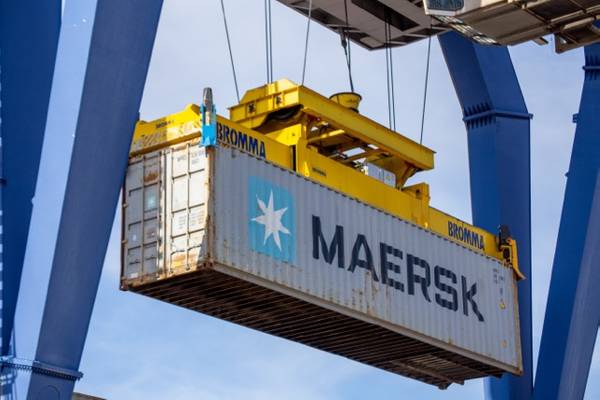
Shipping group Maersk raised its full-year profit forecast on Thursday as robust global container demand defied fears that tariffs would hit trade, although the company predicted a slowdown later this year.
Maersk, viewed as a barometer of world trade, said it now expected global container volumes to increase by 2% to 4% this year, compared with a range of down 1% to up 4% estimated in May . The new range implies lower second-half growth, it said.
A drop in U.S. imports after President Donald Trump unleashed a barrage of tariffs on foreign goods "was more than offset" by strong growth in imports into other regions, including Europe, the Danish firm said in its second-quarter earnings statement.
CEO Vincent Clerc told reporters that most customers - which include Walmart and Nike - are taking a wait-and-see approach to potential changes in their supply chains, and that container shipping was immune to trade tariffs in the short term.
Chinese shipments into Europe and other regions started increasing last year and continued into 2025, Clerc said, adding that Maersk's own data did not suggest this growth was fuelled by U.S. tariffs.
"The normal relationship between how things are going in the U.S. and how things are going in the rest of the world is changing as China plays a larger and larger role in the global economy," Clerc told reporters in Copenhagen.
"This has meant that despite volatility in the U.S., we have seen very stable high demand for container shipping in the rest of the world," he said.
Maersk shares rose as much as 6%, and were up 2.6% at 0951 GMT. The shares have risen about 60% since April, when Trump upended global trade relations.
GEOPOLITICAL UNCERTAINTY
Trade between China and the U.S. plummeted earlier this year amid escalating tit-for-tat tariffs.
While a truce was agreed, investors remain on edge over whether the world's two largest economies can clinch a deal before an August 12 deadline.
Maersk said it now expected underlying earnings before interest, tax, depreciation and amortisation this year of between $8 billion and $9.5 billion, compared with its previous guidance of between $6 billion and $9 billion.
It said EBITDA rose 7% year-on-year in the second quarter to $2.3 billion, above the $1.98 billion expected by analysts.
Sales rose 3% year-on-year to $13.1 billion, also beating the $12.6% billion forecast by analysts in a company poll.
(Reuters)


